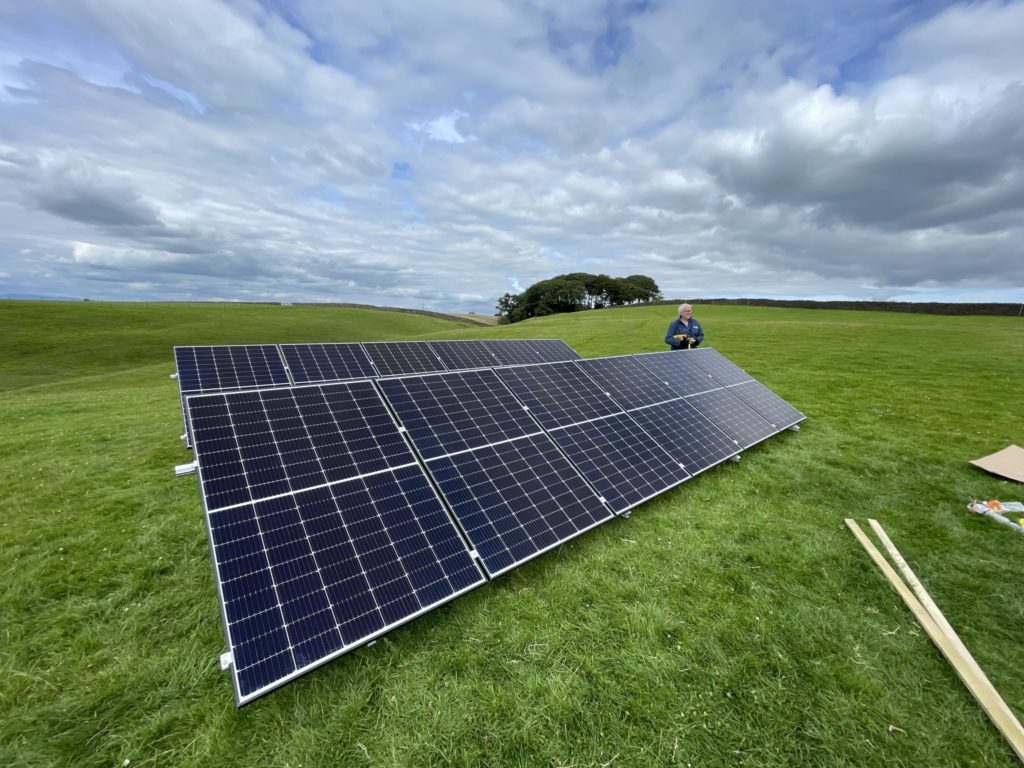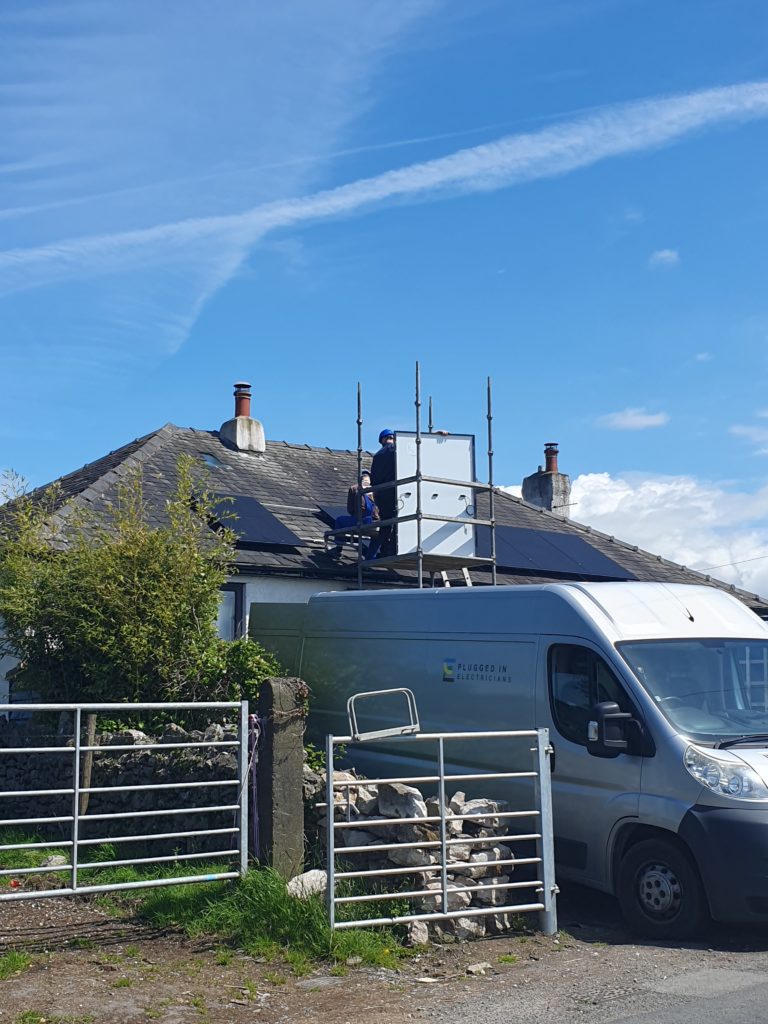
Solar Panels and Battery Storage Systems for Your Home
As concerns about climate change grow and energy costs rise, many homeowners are exploring alternative power sources to reduce their reliance on the grid and lower their carbon footprint. Solar panels and battery storage systems have become popular solutions, offering the potential for energy independence and sustainability. This blog will delve into the benefits of these technologies, the installation process, associated costs, and the long-term benefits of adopting alternative energy sources in your home.
1. Solar Panels: Harnessing the Power of the Sun
- Renewable Energy Source: Solar energy is abundant and renewable, reducing dependence on fossil fuels and contributing to a greener planet.
- Lower Energy Bills: By generating your own electricity, you can significantly reduce or even eliminate your monthly utility bills, depending on your system size and energy consumption.
- Tax Incentives and Rebates: Many governments offer tax credits, rebates, and incentives to encourage the adoption of solar energy. In the UK, for instance, there are various grants and schemes available to help offset the cost of installation.
- Increased Home Value: Homes equipped with solar panels often see an increase in property value. Buyers are increasingly attracted to energy-efficient homes that offer lower utility costs.
- Low Maintenance: Solar panels require minimal maintenance. Once installed, they typically need only occasional cleaning and routine inspections to ensure optimal performance.
- Energy Independence: With solar panels, you can generate your own electricity and reduce your reliance on the grid. This can be particularly beneficial during power outages or in areas with unreliable energy infrastructure.
- Cloudy Days: Despite common solar myths, solar panels still generate plenty of power, even on cloudy days in places like Lancashire.
Installation Process with Plugged In Electricians
- Site Assessment: We will assess your home to determine its suitability for solar panels. This includes evaluating your roof’s orientation, angle, and shading, as well as your current energy usage.
- System Design: Based on the assessment, a customised solar system will be designed to meet your energy needs and fit your roof space.
- Installation: The solar panels are mounted on your roof and connected to an inverter, which converts the solar energy into usable electricity. The system is then connected to your home’s electrical system.
- Inspection and Activation: After installation, the system is inspected to ensure it meets all safety and regulatory standards. Once approved, the system is activated, and you can start generating your own electricity.
2. Battery Storage Systems: Storing Solar Power for Later Use
- Energy Independence: Battery storage allows you to store excess solar energy generated during the day for use at night or during power outages. This increases your energy independence and reduces reliance on the grid.
- Maximising Solar Power Usage: Without a battery, excess solar energy is sent back to the grid, often at a lower rate than what you pay for electricity. With a battery, you can store this energy and use it when needed, maximising your solar investment.
- Backup Power During Outages: In the event of a power cut, a battery storage system can provide backup power to keep essential appliances and systems running.
- Time-of-Use Optimisation: In areas with time-of-use (TOU) electricity rates, battery storage allows you to use stored solar energy during peak rate periods, reducing your electricity costs.
Installation Process
- Battery Selection: Choose a battery that meets your energy storage needs. Popular options include lithium-ion batteries like the Tesla Powerwall, LG Chem RESU, and Sonnen Eco.
- System Integration: The battery is integrated with your solar system and connected to your home’s electrical system. This allows the battery to store excess solar energy for later use.
- Inverter Installation: A hybrid inverter or a separate battery inverter may be required to manage the flow of electricity between the solar panels, battery, and your home.
- Monitoring Setup: Most battery systems come with monitoring software that allows you to track energy production, storage, and usage in real-time via a smartphone app or online portal.
- Testing and Activation: After installation, the system is tested to ensure it functions correctly. Once everything is verified, the battery system is activated, and you can start storing your solar energy.

3. Cost Considerations
Solar Panels
- Upfront Costs: The cost of a solar panel system ranges from £5,000 to £15,000, depending on system size, location, and the specific technology used.
- Incentives and Rebates: Government grants, feed-in tariffs, and other incentives can significantly reduce the initial cost. Be sure to research available incentives in your area.
- Payback Period: The payback period for a solar system typically ranges from 5 to 10 years, depending on energy savings and incentives. After this period, your energy savings essentially become profit.
Battery Storage Systems
- Upfront Costs: Battery storage systems can add £4,000 to £10,000 to your solar installation costs, depending on the battery’s capacity and technology.
- Incentives and Rebates: Some local authorities and utilities offer incentives for battery storage systems, which can help offset the costs. Additionally, in some areas, batteries qualify for solar tax incentives.
- Maintenance Costs: While solar panels require minimal maintenance, battery systems may require more frequent checks and eventual replacement after 10-15 years.
4. Long-Term Benefits
Environmental Impact
- Reducing Carbon Footprint: Solar panels and battery storage systems significantly reduce your reliance on fossil fuels, lowering your carbon footprint. This contributes to a cleaner environment and helps combat climate change.
- Sustainability: By investing in renewable energy, you’re contributing to the global shift towards sustainable energy sources, helping to preserve resources for future generations.
Financial Savings
- Energy Bill Reduction: With solar panels, you can generate your own electricity, reducing or even eliminating your energy bills. Over time, these savings can add up to tens of thousands of pounds.
- Protection Against Rising Energy Costs: As utility rates continue to rise, generating your own electricity provides a hedge against increasing energy costs.
- Increased Property Value: Homes with solar panels and battery storage systems often sell for more than homes without them, making these systems a valuable long-term investment.
Energy Security
- Resilience During Power Outages: Battery storage systems provide backup power during outages, ensuring that your home remains functional even when the grid goes down. This is especially important in areas prone to natural disasters or frequent blackouts.
- Time-of-Use Savings: By using stored energy during peak rate periods, you can save money by avoiding the highest electricity rates.

Conclusion
Solar panels and battery storage systems offer a compelling way to reduce your energy costs, lower your environmental impact, and increase your home’s resilience and independence. While the initial investment can be significant, the long-term benefits often outweigh the costs, especially when considering the financial incentives and savings on energy bills. As you explore these alternative power sources, working with a qualified professional is crucial to ensure a smooth installation process and optimal system performance.
Plugged In Electricians
Here at Plugged In Electricians, we provide comprehensive Solar Panel and Battery installation and Maintenance services. Our office is equipped with a 12 panel solar set up which powers our operations day to day. This gives us great first hand knowledge of the technology and it’s capabilities.
Check out our perfect 5* Google Review score HERE and see what our customers have to say about our sustainable services.
Ready to go green? Contact us today to discuss your solar and battery storage options, and take the first step towards a more sustainable and energy-independent future.
Phone: 01524 932524
Email: help@pluggedinelectricians.co.uk
Website: www.pluggedinelectricians.co.uk
